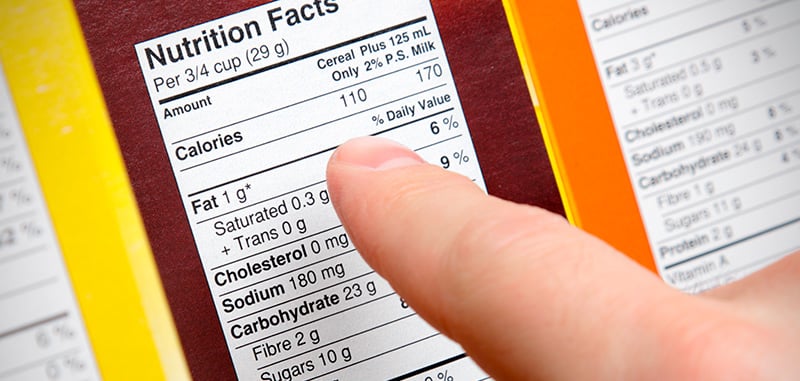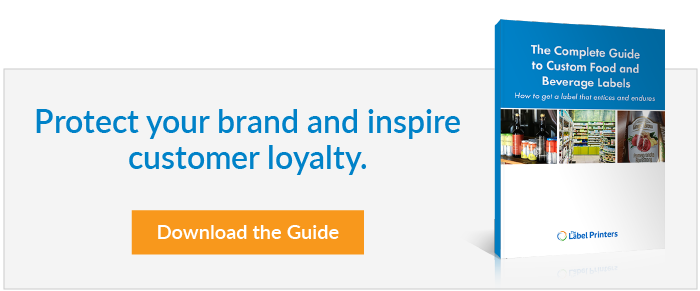
Earlier this year, it was reported that the Center for Science in the Public Interest (CSPI) filed a regulatory petition asking the Food and Drug Administration to change the labeling system for food and beverages sold in the United States. The idea has gained a lot of traction, most recently garnering the support of the Biden-Harris administration.
While these changes have not yet been made into law, the United States wouldn’t be the first to do so. According to the CSPI, dozens of other countries have already made similar changes to nutrition labeling, and more are expected to follow.
What does all this mean for food and beverage manufacturers? Let’s take a closer look to find out.
What are the proposed nutrition label changes?
The CSPI is a food and health watchdog with the goal of “improving the food system to support healthy eating.” In an effort to fulfill that mission, the organization has requested the FDA require food and beverage makers to shift to a mandatory front-of-package labeling system.
They’re not alone, either. The CSPI was joined in filing their petition by organizations like the Association of SNAP Nutrition Education Administrators and the Association of State Public Health Nutritionists. Clearly, among nutrition-minded organizations, there’s an interest in implementing these changes. But what do they hope to accomplish?
Why make changes to nutrition labels at all?
According to the CSPI, consumers in the United States have “generally poor diet quality and high rates of diet-related chronic disease.” The watchdog further cites Senator Richard Blumenthal’s assertion that one cause of these problems is that “current food labels create confusion and fail to provide important, useful information to consumers.”
The goal of nutrition label changes is to help clear up some of that confusion. As evidence that these changes work, the CSPI points to the example of Chile, which implemented new product label changes in 2016 that clearly identified food products that contained high amounts of sugars, saturated fat, and so on. After these label changes took effect, the CSPI reports, sugar consumption dropped “by more than 10 percent.”
While such dietary changes would certainly be a win for public health, not everyone agrees that nutrition labels are an effective means of changing consumer behavior.
Do nutrition label changes really make people healthier?
Over the last decade or so, there have been several attempts to improve the way Americans eat by changing requirements around nutrition labels. Back in 2011, restaurants were required to post nutrition information even as studies suggested this would have little effect on the way people ordered their food.
More recently, a study published by the American Journal of Preventive Medicine suggested that nutrition labels yield mixed results. While labels did seem to reduce unhealthy choices overall, they did little to change “the intake of total carbohydrates, protein, saturated fat, or sodium.” The authors concluded that while “food labels appear to work to shift consumer or industry behavior for a few dietary targets,” they did not necessarily help much “for many others.”
But just how much should we expect from nutrition labels when it comes to public health? Rather than demand labels serve as a magic bullet that changes everyone’s behavior all the time, it may be wiser and more realistic to treat them as a tool that may yield some positive results. From the CSPI’s perspective, even those small-scale effects likely make these changes worthwhile.
How would these changes affect food and beverage manufacturers?
While a shift to front-of-package nutrition labels would be a dramatic change, it wouldn’t be the first time food and beverage manufacturers have had to adapt. Consumer demand, regulations, and other factors have always played a role in how information appears on product labels, and manufacturers have long worked to keep up with these symbols, stamps, and certifications.
Still, front-of-package nutrition labels would be disruptive enough that we’re likely to see brands push back against new requirements. These changes aren’t a matter of adding a small stamp or symbol. They would require a major overhaul of brand designs — an expensive proposition for food and beverage manufacturers.
Would these changes affect the price of label printing as well? Some considerations, like changes to the size of a label or adding additional colors, could affect the price-per-label for manufacturers. But if the proposed regulations turn out to be nothing more than a matter of rearranging the same existing elements, then the cost of printing, at least, would not change.
How should brands prepare for possible front-of-package changes to nutrition labels?
As mentioned above, it’s likely that we’ll see some pushback from brands regarding label changes like these. They’re big, disruptive, and potentially expensive for manufacturers who suddenly find themselves required to redesign all of their labels.
But there are good reasons for brands to get ahead of the curve. For one thing, the international market is already trending in this direction. Canada recently announced that front-of-package nutrition labeling will be the law of the land as of January 1, 2026, and we expect more countries to follow. Manufacturers selling on these markets are likely already adapting to these new requirements.
In the United States, brands have a unique opportunity to stand out as early adopters of front-of-package labeling. For health-conscious brands especially, touting nutritional information on the front of a package is a bold way to differentiate themselves in a crowded market.
How soon will front-of-package nutrition label requirements become law?
While there’s good reason to think that these new requirements will eventually pass, it’s also important to remember that new regulations aren’t rolled out overnight, especially at the federal level. It’s more typical to see early legislation for these types of efforts begin at the state level and grow over time.
Once we begin to see state legislation pass and gain popularity, then it’s likely to happen at a national level — either as the official law of the land, or because enough states have passed legislation that brands find it easier to switch all their labels to the new format.
But for those brands looking for an edge over the competition, this question might be a moot point. By changing to front-of-package nutrition labels now, brands can ensure their products stand out on grocery store shelves.

